Snake Holes in Your Yard: How to Identify & Fill
Author: Chris Miller | Editor: Omar Alonso
Review & Research: Jen Worst & Chris Miller
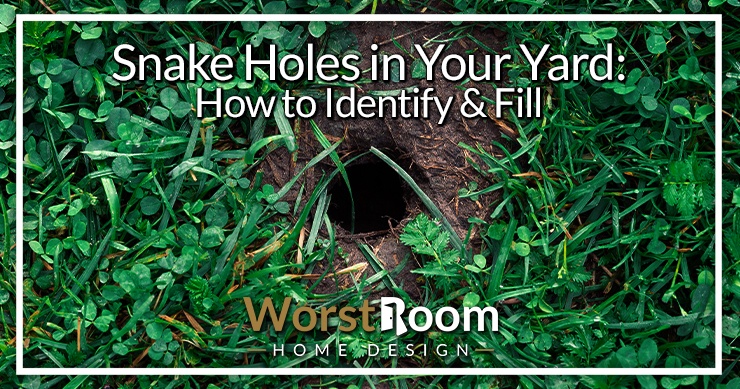
If you've ever noticed small, circular holes in your lawn, you may be wondering what could be causing them. One possibility is that they are snake holes in your yard. While it's not uncommon for snakes to make their homes in yards, it can be concerning for many homeowners.
In this article, we'll explore how to identify snake holes in the ground, what you can do to prevent them from occurring, and what steps you can take if you do find snake holes on your property.
Whether you're worried about the safety of your family or just want to keep your yard looking its best, understanding how to deal with snake holes is an important part of being a responsible homeowner.
What Do Snake Holes Look Like?
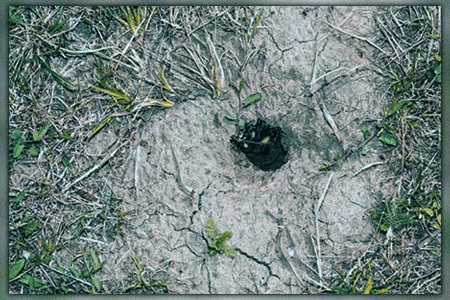
Snake burrows can differ in size and form based on the type of snake that made it. Generally, these burrows have an oval or circular entrance with smooth edges due to snakes' scale-covered bodies rubbing against the soil as they enter and exit their dens.
The diameter of a snake hole can typically be between 1-3 inches (2-7 cm). Keep in mind that some snakes may use existing tunnels made by rodents or other small animals instead of digging their own.
Where Are Snake Holes Found?
You can find snake holes near structures such as rocks, logs, or building foundations that provide cover from predators and extreme weather conditions. They may also be located close to sources of food like rodent nests or areas with abundant insects.
Well-drained soils, sunny spots for basking during colder months, and proximity to water sources are other factors attracting snakes when choosing a location for their den.
How To Tell if a Hole Is From a Snake or Another Animal?
Here is how you identify snake holes in your yard:
- Hole Shape: As mentioned earlier, snake holes tend to have smooth-edged openings, while those dug by mammals (like chipmunk holes) often have irregular shapes with loose dirt surrounding the entrance.
- Hole Size: Comparing the size of the hole with known burrow diameters for local wildlife can help determine if it belongs to a snake or another animal. For example, rodent holes are typically smaller than those made by snakes.
- Tracks: Look for any tracks or signs left behind by animals near the hole. Snakes may leave distinctive trails in soft soil or sand, while mammals like rodents and rabbits will have footprints.
- Droppings: Animal droppings found near the entrance can provide clues about its inhabitant. Snake feces are usually dark brown or black and contain white uric acid crystals, whereas mammal droppings vary depending on their diet but generally lack uric acid deposits. Here is a helpful guide to identifying snake poop.
Snake holes in the ground have a distinct look due to the snake’s digging methods and abilities.
Preventing Snakes From Entering Your Yard
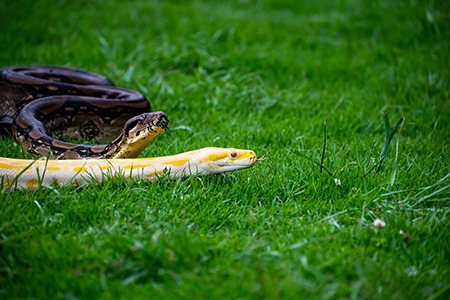
Maintaining a secure and pleasant outdoor area necessitates the exclusion of snakes from your yard. Maintaining a neat and orderly yard can help to discourage snakes from entering, as well as planting natural repellents and erecting fencing around the perimeter.
Keeping Your Yard Clean & Tidy
A well-maintained yard is less likely to attract snakes as they prefer areas with plenty of hiding spots. To minimize the chances of snakes making their home in your garden, follow these tips:
- Regularly mow the lawn to keep grass short.
- Remove piles of leaves, debris, or wood that could serve as shelter for snakes.
- Avoid overgrown bushes or plants near walkways where snakes might hide.
- Maintain a clutter-free environment by storing items off the ground in sealed containers or on shelves.
Part of how to get rid of a snake hole is preventing it in the first place.
Planting Natural Snake Repellents
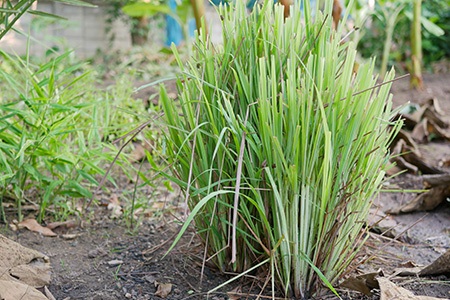
Natural snake repellents can be an effective way to discourage sankes from entering your property without causing harm to other wildlife. Some plants known for repelling snakes include:
- Marigolds: These bright flowers emit a strong odor that deters many pests, including rodents which are common prey for some snake species.
- Lemongrass: This plant contains citronella oil, which is a natural snake repellent. Planting lemongrass around the perimeter of your yard can help keep snakes at bay.
- Mother-in-law's tongue: Also known as snake plant, this succulent has sharp leaves that may deter snakes from slithering through them.
Again, snake holes in your yard don’t appear if there aren’t any snakes around.
Installing Fencing Around Your Property
Installing fencing around your property can serve as an effective barrier to prevent snakes from entering your yard. Consider these tips when choosing and installing a fence:
- Select a solid or mesh material with small openings (1/4 inch or smaller) to prevent even small snakes from passing through.
- Install the fence at least two feet high, with six inches buried underground to discourage burrowing beneath it.
- Regularly inspect the fence for any gaps or holes where snakes could enter and repair them promptly.
Taking preventative measures such as maintaining a clean yard, planting natural repellents, and installing fencing will significantly reduce the likelihood of encountering unwanted snake visitors in your outdoor space. By following these steps, you'll create a safer environment for yourself and your family while enjoying time spent outdoors together.
Maintaining a neat and orderly environment in your yard, planting deterrents that are native to the area, as well as constructing barriers around your property can significantly reduce the likelihood of snakes encroaching. To deal with pre-existing snake holes, a variety of approaches can be taken to successfully remove them from the vicinity.
Dealing With Snake Holes in Your Yard
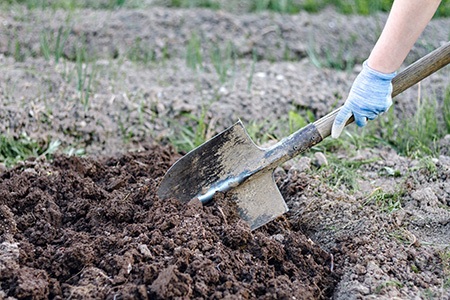
If you've discovered snake holes in your yard, it's essential to address the issue promptly and effectively. There are several methods for dealing with existing snake holes, including filling in the hole, setting traps to catch snakes, and calling professional help for removal.
Filling in the Snake Hole
Filling in a snake hole is one of the simplest ways to deal with an unwanted reptilian visitor. To do this, carefully fill the hole with soil or gravel while wearing gloves to protect your hands from potential bites or other hazards. Filling the hole can be a successful strategy to stop snakes from coming back and encourage them to look for another spot. Snake holes in your backyard no more!
Setting Traps To Catch Snakes
Another option for dealing with snake holes is setting up traps designed specifically for catching snakes. These can be purchased online or at local home improvement stores and should be placed near the entrance of the suspected snake hole following manufacturer instructions. Check traps daily so that any captured snakes can be safely relocated away from your property as soon as possible.
- Note: Be sure only non-lethal traps are used when attempting this method; killing native wildlife could result in fines or legal consequences depending on local regulations.
- Caution: If you suspect venomous species inhabit your area (e.g., copperheads), exercise extreme caution when handling trapped snakes - consider contacting a professional instead.
What to pour down a snake hole is up to you, but soil or gravel is the best. Don’t use chemicals, which can damage your yard and is inhumane for the snake. Just send them on to their next location. They won’t move one foot over, they’ll decide the entire area isn’t safe and flee.
Calling Professional Help for Snake Removal
In some cases, particularly if venomous species are involved, or multiple nests have been found throughout your yard, it may be best to call in a professional snake removal service. These experts have the necessary experience, equipment, and knowledge to safely remove snakes from your property without causing harm to you or the animals.
Safety Tips When Encountering Snakes in the Yard
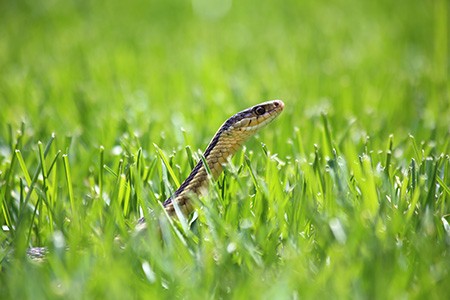
When encountering snakes in the yard, it is important to remain composed and follow safety measures to ensure one's well-being. In this section, we'll discuss some essential tips for staying safe when you come across snakes on your property.
Remain Calm and Move Away Slowly
The first thing you should do when encountering a snake is to remain calm. Panicking may cause the snake to feel threatened and increase the chances of an attack. Instead, take slow steps backward until you're at least six feet away from the snake. Remember that most snakes are non-venomous and would rather escape than confront humans.
Wear Protective Clothing & Shoes
If you live in an area where snakes are common or have encountered them before, consider wearing protective clothing while working outdoors or walking through tall grasses or bushes.
Long pants made of thick material like denim can help protect your legs from potential bites, while sturdy boots with high ankle support will shield your feet from accidental contact with hidden snakes.
Additionally, heavy-duty gloves can protect your hands if you need to handle objects near suspected snake habitats, and gaiters can provide additional protection against bites by covering vulnerable areas between footwear and pant legs.
Keep Pets Away From the Area
Pets, especially curious dogs and cats, may inadvertently provoke a snake by getting too close or attempting to play with it. To keep your pets safe from potential bites, make sure they are supervised when outside in areas where snakes might be present.
If you notice a snake in your yard, bring your pets inside immediately and give the snake time to move away before allowing them back out.
Don’t Panic About Snake Holes in Your Yard
Remember to keep your yard clean and tidy, plant natural repellents or install fencing around your property to deter snakes from coming near.
If you stumble upon a snake hole or spot a serpent in your yard, it is essential to remain composed and move away gradually. Wear protective clothing and shoes if necessary and keep pets away from the area. If you need professional help removing a snake or filling in a hole safely.
You should now have a clearer idea of how to identify snake holes in your yard, deter snakes from entering the premises, handle existing snake burrows and be cautious when coming across snakes.



